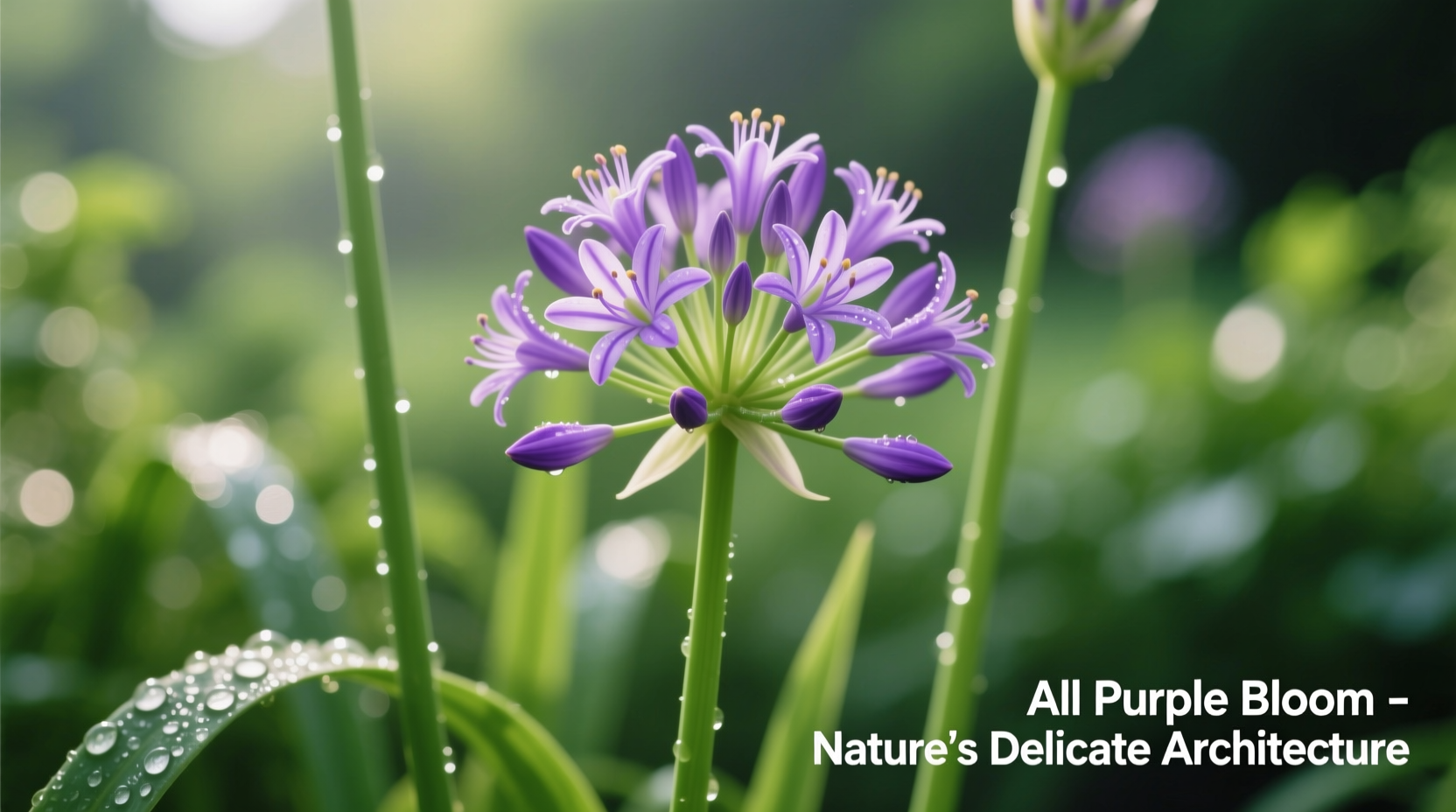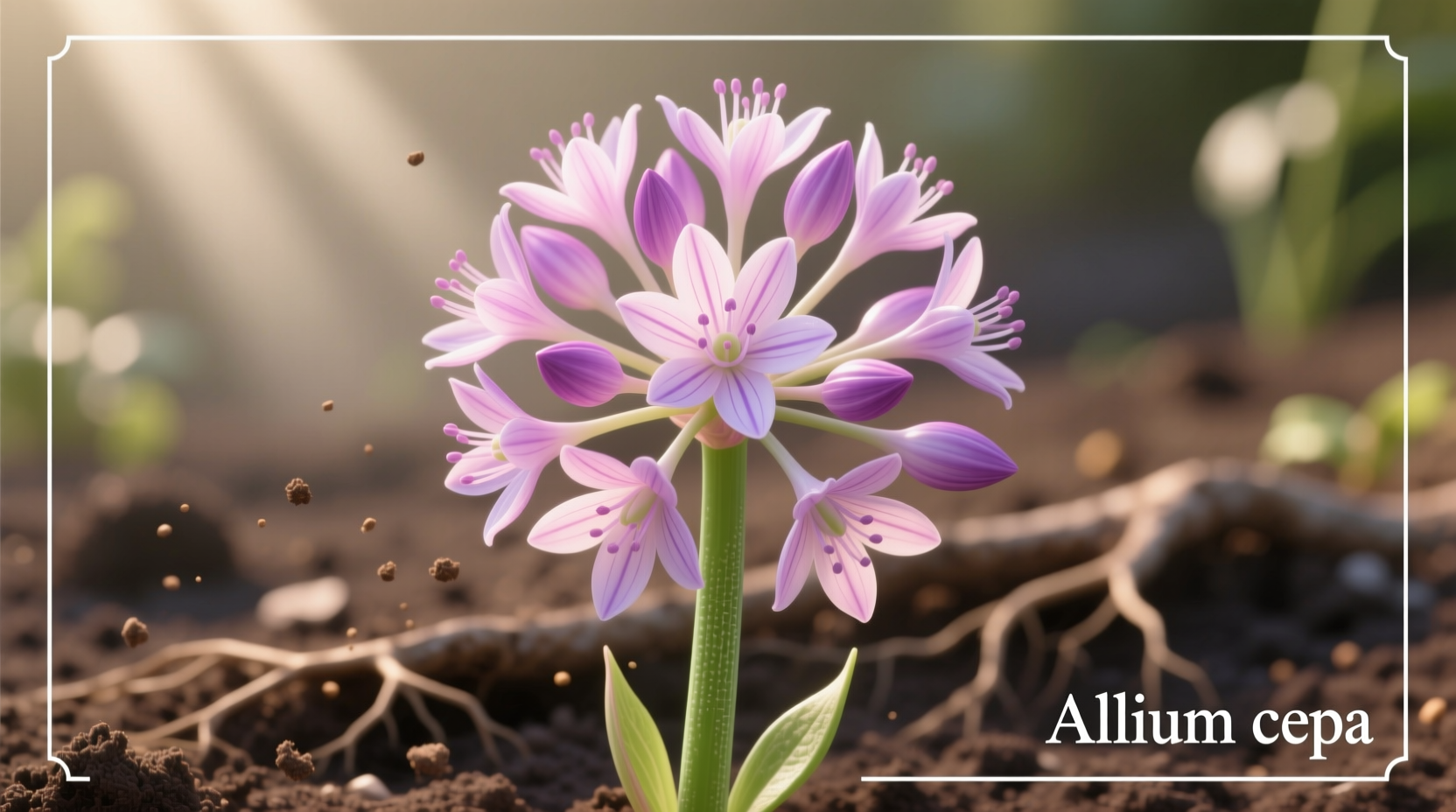Onion plant flowers are spherical, purple or white blooms that form atop long stalks when the plant bolts, typically indicating stress or maturity. While edible and mildly flavorful, flowering usually means the bulb development has slowed or stopped, affecting harvest quality.
What You Need to Know About Onion Plant Flowers
When your onion plants suddenly send up tall stalks topped with round, pom-pom-like flowers, you're witnessing a natural but often problematic stage in the onion life cycle. These distinctive blooms signal that your onions have "bolted"—shifted from bulb development to reproduction. Understanding what triggers this process and how to respond can save your harvest and even provide unexpected culinary benefits.
Identifying Onion Plant Flowers: What to Look For
Onion flowers appear as spherical clusters (umbels) measuring 1-3 inches in diameter, composed of dozens of tiny star-shaped florets. They typically display in shades of purple, white, or pale pink, emerging atop hollow, waxy stalks that can reach 2-3 feet tall. The distinctive spherical shape and strong onion scent when crushed make them easily recognizable.

Why Onion Plants Flower: The Science Behind Bolting
Onions flower as part of their natural reproductive cycle, but premature flowering (bolting) in garden settings usually indicates environmental stress. Common triggers include:
- Temperature fluctuations (especially cold snaps followed by warmth)
- Day length changes (onions are day-length sensitive)
- Water stress (both over- and under-watering)
- Poor soil conditions or nutrient deficiencies
- Planting at incorrect times for your climate zone
When onions bolt, energy shifts from bulb formation to seed production, resulting in smaller, less dense bulbs that don't store well. This biological switch typically occurs when plants experience conditions mimicking their natural lifecycle in their native Central Asian habitats.
| Onion Type | Flowering Tendency | Best Harvest Timing | Storage Potential After Flowering |
|---|---|---|---|
| Long-Day Onions | High (bolts with 14+ hours daylight) | Late summer | Poor (2-4 weeks) |
| Short-Day Onions | Moderate (bolts with 10-12 hours daylight) | Early summer | Fair (1-2 months) |
| Intermediate-Day Onions | Low (bolts with 12-14 hours daylight) | Mid-summer | Good (3-5 months) |
| Walking Onions | Very Low (rarely flowers) | Year-round | Excellent (6+ months) |
Practical Guidance: What to Do When Your Onions Flower
Immediate Actions for Gardeners
When you spot the first flower stalks emerging, take these steps within 24-48 hours for best results:
- Assess bulb size - Gently brush soil away to check if bulbs have formed
- Decide your priority - Harvest immediately for green onions or attempt bulb salvage
- Cut flower stalks - Use clean shears to remove the entire stalk at base level
- Maintain consistent watering - Provide 1 inch of water weekly to encourage remaining bulb growth
- Apply balanced fertilizer - Use 10-10-10 formula to redirect energy to bulbs
Contextual Decision-Making: When to Harvest vs. Wait
Not all flowering onions should be treated the same. Consider these contextual factors:
- Early season flowering (before bulb formation) - Harvest immediately as bulbs won't develop properly
- Late season flowering (bulbs nearly mature) - Cut flower stalks and allow 2-3 more weeks for bulb finishing
- Seed saving purposes - Let 1-2 plants flower completely if collecting seeds for next season
- Extreme weather conditions - Harvest immediately if heatwave or drought is forecasted
Culinary Uses of Onion Flowers
Don't discard those beautiful blooms! Onion flowers offer subtle flavor and visual appeal:
- Edible garnish - Sprinkle individual florets over salads, soups, or roasted vegetables
- Flavor infusion - Steep in vinegar or olive oil for delicate onion-flavored condiments
- Pickling - Preserve in vinegar brine for unique cocktail garnishes
- Herb butter - Mix chopped flowers into softened butter for bread or steak topping
According to research from the University of California Agriculture and Natural Resources, onion flowers contain similar beneficial compounds to the bulbs, including organosulfur compounds and flavonoids, though in lower concentrations (UC ANR, 2023).
Preventing Premature Flowering in Future Crops
Implement these proven strategies to minimize bolting in your onion patch:
- Choose appropriate varieties for your climate zone (short-day for southern regions, long-day for northern)
- Plant at correct time - Set transplants when soil reaches 50°F (10°C) but before major temperature swings
- Use proper spacing - Allow 4-6 inches between plants to reduce competition stress
- Maintain consistent moisture - Use mulch to regulate soil temperature and moisture
- Select appropriate planting stock - Use small sets (under ¾ inch diameter) which are less prone to bolting
The Cornell University Gardeners' Resource confirms that proper planting timing reduces bolting incidence by up to 70% compared to early planting in fluctuating temperatures (Cornell Gardening, 2024).
When Flowering Isn't a Problem: Special Onion Varieties
Not all onion relatives treat flowering as problematic. Chives (Allium schoenoprasum) and ornamental alliums are grown specifically for their flowers. Egyptian walking onions rarely flower but produce bulbils at stalk tops. Understanding your specific allium variety's natural tendencies helps determine appropriate responses to flowering.
FAQ: Frequently Asked Questions About Onion Plant Flowers
Are onion plant flowers edible?
Yes, onion flowers are completely edible with a mild onion flavor. Use the individual florets as garnish or add whole flower heads to salads. They contain similar beneficial compounds to onion bulbs but in lower concentrations.
Should I cut the flowers off my onion plants?
Yes, if you want to maximize bulb size and storage potential. Removing flower stalks redirects the plant's energy back to bulb development. Cut the entire stalk at its base as soon as you notice it emerging for best results.
Why did my onion plants flower but not produce bulbs?
Onion plants that flower prematurely often don't develop proper bulbs because energy shifts to reproduction. This typically happens due to temperature fluctuations, improper planting time, or using oversized sets. Once flowering begins, bulb development significantly slows or stops.
Can I save seeds from onion flowers?
Yes, you can collect seeds from mature onion flowers. Allow 1-2 plants to fully flower and develop seed heads. When the seed heads turn brown and dry, harvest them and extract the black seeds. Note that hybrid varieties may not produce true-to-type offspring.
How long after flowering can I harvest onions?
If you remove the flower stalk immediately, you might gain 2-3 weeks of additional bulb development. However, flowering indicates the plant has shifted to reproduction, so harvest within 2-4 weeks for best results. Onions that have flowered won't store as well as non-flowered bulbs.











 浙公网安备
33010002000092号
浙公网安备
33010002000092号 浙B2-20120091-4
浙B2-20120091-4